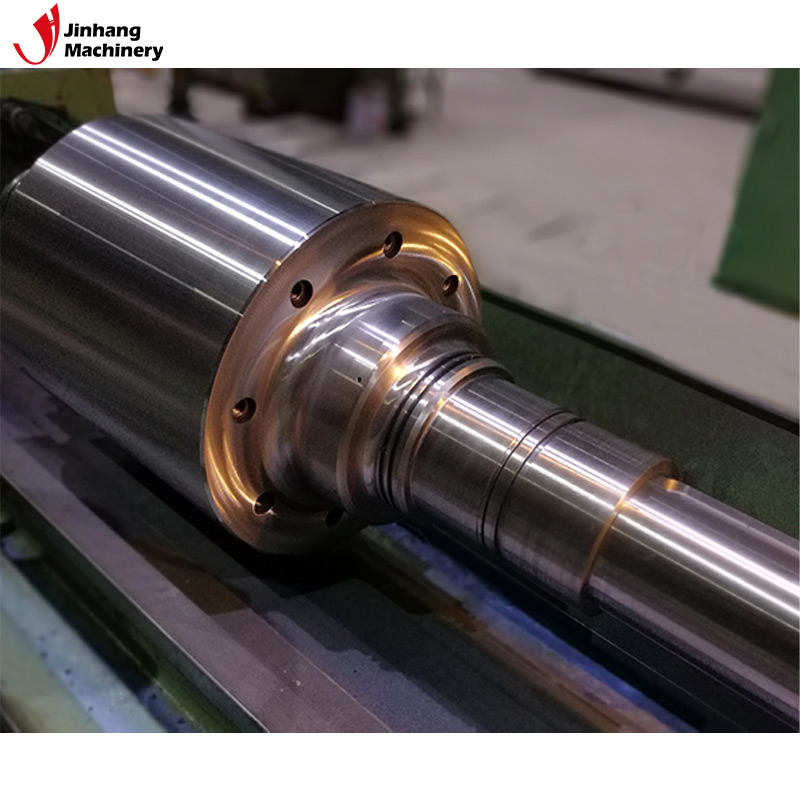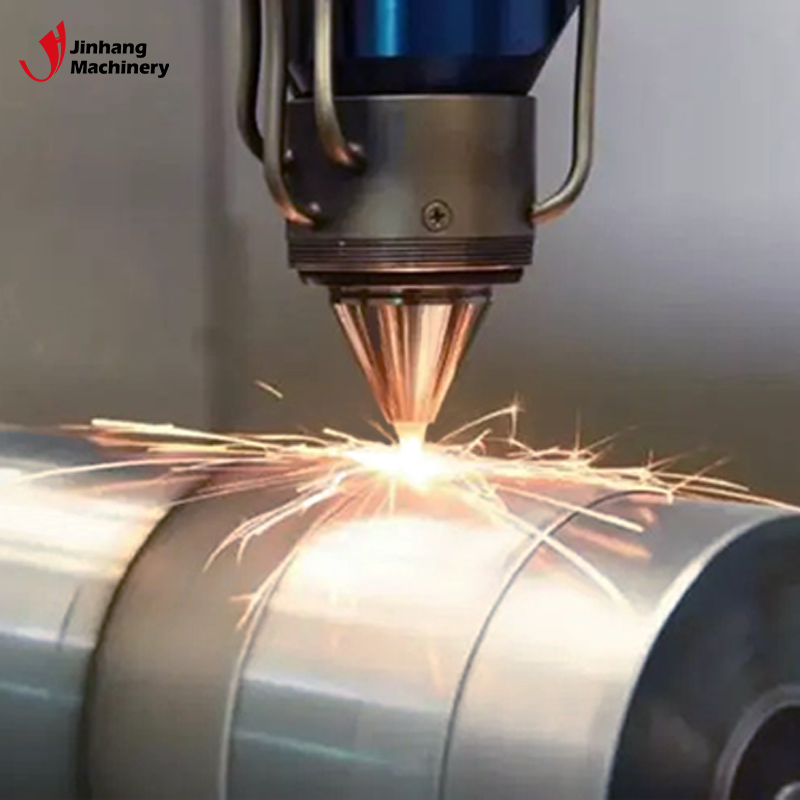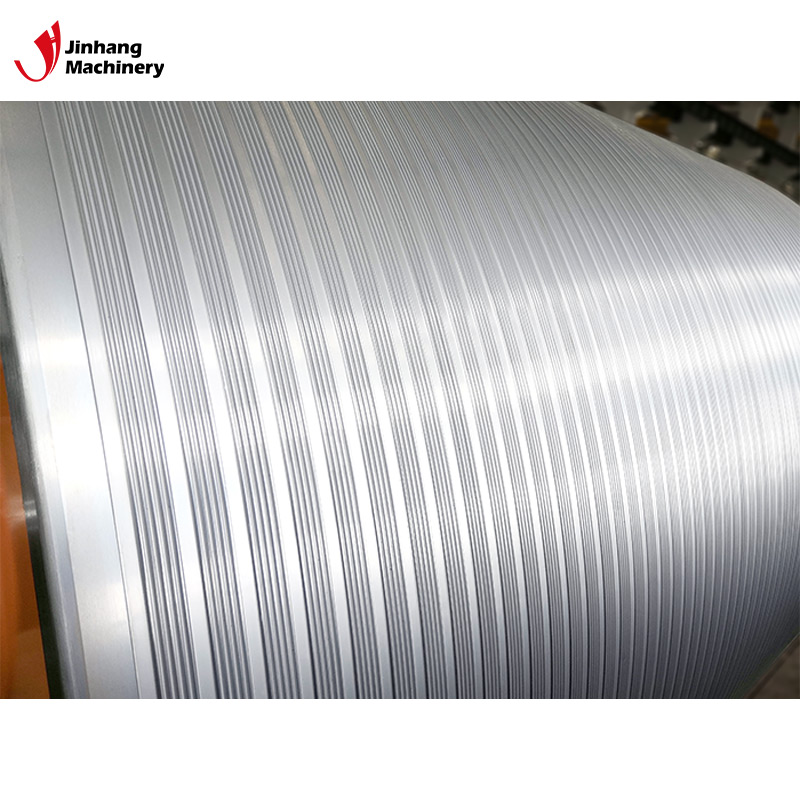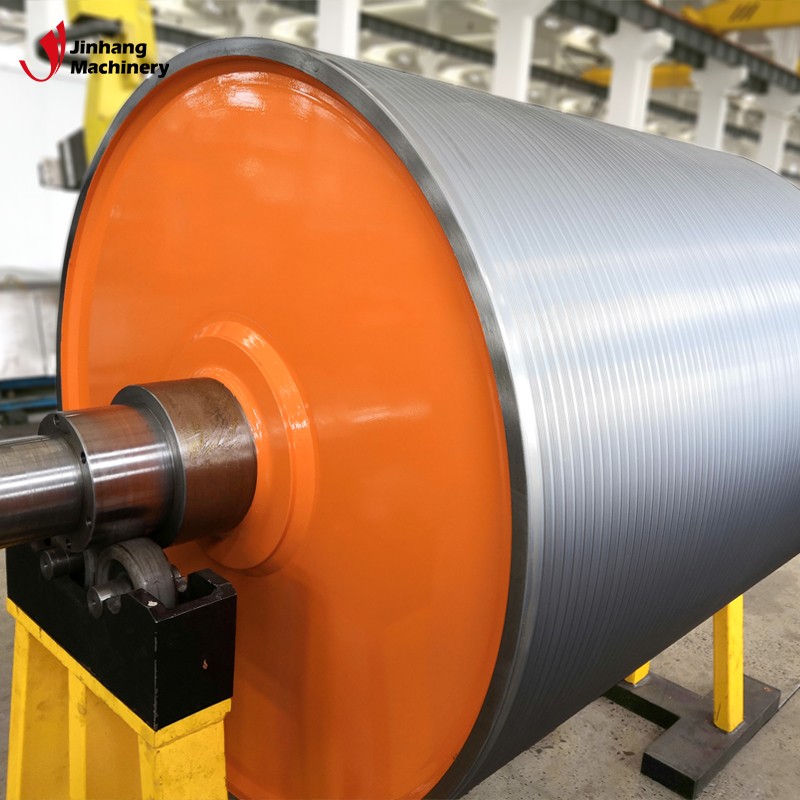What can I use to polish an industrial chrome plated roller?
In industrial production, chrome plated rollers are widely used in many fields, such as printing, papermaking, metal processing, etc. The chrome layer not only improves the surface hardness, wear resistance and corrosion resistance of the roller, but also provides a guarantee for the long-term use of the equipment. However, with the increase of use time, the surface of the industrial chrome plated roller may be scratched, stained, oxidized or otherwise damaged, resulting in a decrease in the performance of the roller. Therefore, polishing the industrial chrome plated roller has become one of the important means to maintain and restore its working efficiency.
In this article, we will take a deep look at how to polish the chrome layer of the industrial chrome plated roller, and what tools and methods can be used in this process to ensure the best surface quality and performance.

Why do you need to polish the industrial chrome plated roller?
1.1 Function of the chrome layer
The chrome layer is mainly deposited on the surface of the roller body through electroplating technology, giving it excellent wear resistance, corrosion resistance, high temperature resistance and smoothness. The chrome plating layer is usually harder than other metal materials and has strong anti-oxidation ability, which is suitable for industrial rollers working under harsh conditions such as high temperature, high pressure and high friction.
The surface of industrial chrome plated roller not only affects the service life of the equipment, but also has a vital impact on the quality of materials in the production process. For example, in the printing industry, the surface smoothness of the roller directly affects the printing quality, while in metal processing, the surface finish and wear resistance directly determine the durability and production efficiency of the roller.
1.2 The necessity of polishing
With long-term use, the surface of the chrome plating layer is prone to scratches, stains, oxide deposition or corrosion, which will cause the working performance of the industrial chrome plated roller to decline and even affect the quality of the final product. Polishing is an effective surface restoration method. By removing dirt, scratches and oxide layers on the surface, it can not only restore its appearance, but also enhance the smoothness and durability of the surface.
The main goals of polishing are:
● Restore surface smoothness: eliminate industrial chrome plated roller wear and scratches, reduce friction and improve work efficiency.
● Remove surface contamination: remove oxides, oils and stains to ensure the functionality of the roller.
● Extend service life: slow down the wear rate of industrial chrome plated rollers by restoring surface integrity and reducing the need for frequent replacement.
Therefore, properly polishing industrial chrome plated rollers is a key link to ensure long-term and efficient operation of equipment.

How to polish the chrome plating of industrial chrome plated rollers?
2.1 Selection of polishing tools
Polishing the chrome plating of industrial chrome plated rollers is not a simple task. It requires professional tools and appropriate techniques. Commonly used polishing tools include:
2.1.1 Polishing machine
The polishing machine is the core tool for large-scale polishing. It is usually equipped with different types of polishing discs and sandpaper. You can choose the appropriate type of polishing machine according to your needs. Common polishing machines are:
● Rotary polishing machine: suitable for processing large surfaces and suitable for preliminary grinding of chrome plated rollers.
● Vibration polishing machine: suitable for more delicate work and can effectively remove tiny scratches and irregular surfaces.
2.1.2 Polishing Sandpaper and Abrasives
There are many types of sandpaper and abrasives used in the polishing process, the most common ones are:
● Emery Sandpaper: Used to remove larger scratches or stains, the coarseness can be selected as needed. The coarseness usually ranges from coarse sandpaper (100-200 mesh) to fine sandpaper (1000 mesh).
● Polishing paste: After the rough grinding is completed, the polishing paste can be used for a detailed finish. Polishing paste usually contains tiny abrasive particles for fine polishing to restore the surface smoothness.
2.1.3 Cloth wheels and wool wheels
Cloth wheels and wool wheels are common polishing tools, usually used for polishing and fine processing. In the final polishing stage, cloth wheels and wool wheels can help remove tiny stains and oxide layers and restore the smooth surface of the roller.
2.1.4 Special cleaning agents
During the polishing process, the use of special cleaning agents can effectively remove oil, impurities and other chemicals on the surface to prevent these substances from having a negative impact on the surface during the polishing process. Common cleaning agents include solvent-based cleaning agents and water-based cleaning agents. Choose the appropriate cleaning agent according to the different pollution levels and use environments.
2.2 Steps for polishing industrial chrome plated rollers
Polishing the chrome layer of industrial chrome plated rollers is a delicate process, which usually includes the following steps:
2.2.1 Preliminary cleaning
Before starting polishing, first make sure that the surface of the industrial chrome plated roller is free of any oil, impurities or contaminants. You can use a special cleaning agent or solvent to thoroughly clean the roller surface to ensure that it is clean and oil-free. This step is crucial because any remaining impurities may affect the subsequent polishing effect.
2.2.2 Rough grinding
The purpose of the rough grinding stage is to remove large scratches, oxide layers and other obvious stains on the surface of the industrial chrome plated roller. Use coarser sandpaper (such as 200 mesh or lower) and a polishing machine for preliminary grinding. Pay attention to evenly apply force during rough grinding to avoid causing new scratches or surface damage.
2.2.3 Fine grinding
After rough grinding, use finer sandpaper (such as 400 mesh or higher) to finely grind the surface. This step can remove scratches left during rough grinding and further smooth the surface. At this time, tools such as vibrating polishers and cloth wheels can be used for processing to ensure uniformity and finish.
2.2.4 Fine polishing
The fine polishing stage is the key to the entire polishing process, which can restore the gloss and smoothness of the chrome layer. Use a fine polishing paste and wool wheel for the final polishing. At this time, you can choose a higher grit sandpaper (such as 800 mesh or above) for fine polishing to achieve a mirror effect.
2.2.5 Cleaning and inspection
After polishing, the industrial chrome plated roller should be thoroughly cleaned to ensure that the residue generated during the polishing process is removed. After cleaning, check whether the surface is smooth and uniform, and make sure that there are no scratches or defects. If necessary, the polishing process can be repeated until the desired effect is achieved.

Precautions when polishing industrial chrome plated roller
3.1 Choose the right abrasive and tools
Choosing the right abrasive and tools according to the surface condition of the industrial chrome plated roller is the key to ensure the polishing effect. If there is severe wear or oxidation on the surface, start with coarse grinding; if there are only slight scratches or stains, you can use finer sandpaper for polishing.
3.2 Control polishing pressure and speed
During the polishing process, it is very important to control the pressure and speed of the polishing machine. Excessive pressure may cause surface deformation or new scratches, and too fast polishing speed may cause uneven polishing or overheating of the surface. Therefore, throughout the polishing process, maintain stable pressure and appropriate speed to avoid excessive operation.
3.3 Avoid excessive wear
Although polishing helps to restore surface smoothness, excessive wear can cause the chrome plating layer to become thinner or even damage the industrial chrome plated roller itself. Therefore, the depth and frequency of polishing should be selected according to actual needs to avoid unnecessary damage to the chrome plating layer.

Supply Custom Rolls for Any Industrial Need – JH Machinery
JH Machinery specializes in supplying custom-designed rolls for various industrial applications. Whether you need mirror-finished rolls, polyurethane rolls, or carbonized tungsten rolls, we manufacture high-quality products that meet industry standards. Our factory offers affordable prices, wholesale purchasing options, and customized solutions to fit your specific requirements. Contact us now for discounted pricing and competitive quotes!
